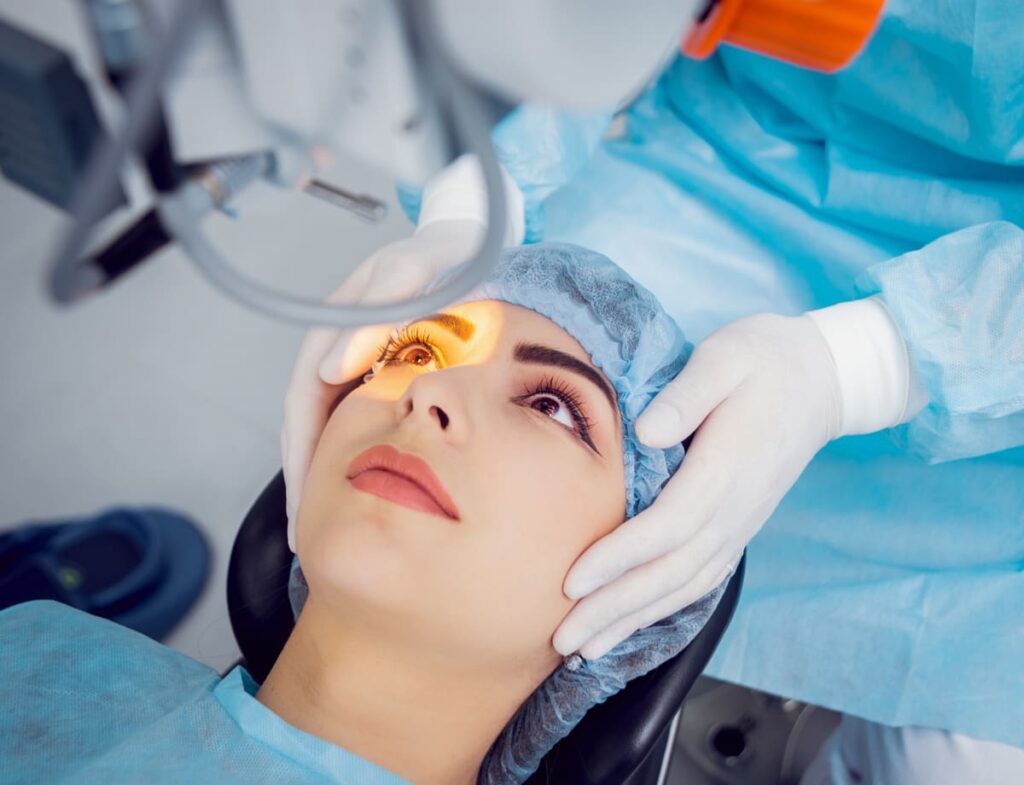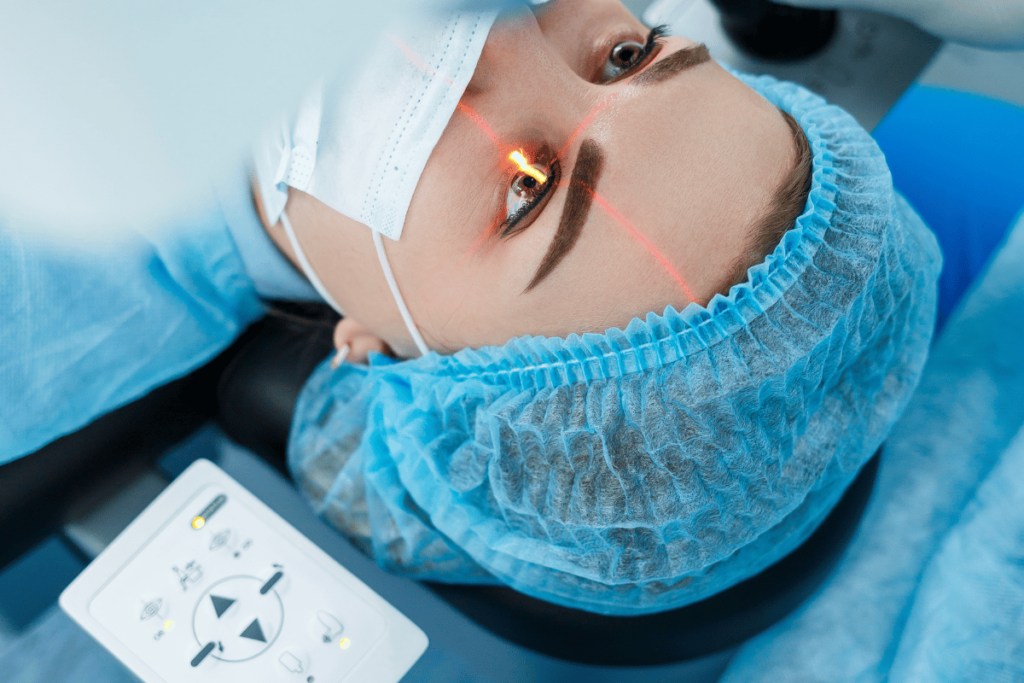Lasik eye surgery has become one of the most popular methods for vision correction in recent years. With its high success rates and minimal risks, it offers a range of advantages for those seeking to improve their eyesight. Understanding the science behind Lasik and the benefits it brings can help individuals make informed decisions regarding their vision correction options.
Understanding Lasik Eye Surgery
lasik eye surgery, which stands for Laser-Assisted in Situ Keratomileusis, is a revolutionary surgical procedure that has transformed the field of ophthalmology. It utilizes advanced laser technology to reshape the cornea, the transparent front part of the eye, with remarkable precision. This reshaping corrects common vision issues such as nearsightedness, farsightedness, and astigmatism, providing patients with clearer vision and potentially reducing their dependence on glasses or contact lenses.
Lasik surgery is a testament to the incredible advancements in medical science, offering a safe and effective solution for individuals seeking to improve their vision and quality of life. The procedure is meticulously designed to address each patient’s unique visual needs, with customized treatment plans tailored to deliver optimal results.

The Science Behind Lasik
The cornea, as the eye’s outermost layer, plays a critical role in the visual process by focusing light onto the retina located at the back of the eye. Any irregularities in the cornea’s shape can lead to refractive errors, causing vision problems. Lasik works by reshaping the cornea to enhance its focusing ability, allowing light rays to accurately converge on the retina. This precise adjustment results in sharper vision and improved visual acuity for patients.
Furthermore, Lasik surgery is a minimally invasive procedure that offers rapid recovery and minimal discomfort for individuals undergoing treatment. The use of state-of-the-art technology and meticulous surgical techniques ensures high levels of safety and efficacy, making Lasik a popular choice for individuals looking to enhance their vision.
The Procedure of Lasik Surgery
The Lasik procedure is a carefully orchestrated series of steps that are performed with utmost precision and expertise. Initially, the surgeon creates a thin flap in the cornea using either a microkeratome or a femtosecond laser, allowing access to the underlying corneal tissue. This flap is then delicately lifted to expose the corneal bed, where the excimer laser is employed to reshape the cornea according to the patient’s specific prescription.
Once the corneal reshaping is complete, the flap is meticulously repositioned, where it naturally adheres back into place without the need for sutures. This innovative technique promotes rapid healing and reduces the risk of postoperative complications, enabling patients to experience improved vision almost immediately. The seamless integration of cutting-edge technology and surgical expertise in Lasik surgery underscores its status as a leading vision correction procedure worldwide. Read about Retraining the brain for better vision at https://news.mit.edu/2023/mark-bear-retraining-brain-for-better-vision-1012
The Benefits of Lasik Eye Surgery
Lasik offers numerous benefits that have contributed to its growing popularity among individuals seeking vision correction:
Lasik surgery, a revolutionary procedure in the field of ophthalmology, has transformed the lives of countless individuals by providing them with clear and crisp vision. Beyond the immediate benefits of improved eyesight, there are several compelling reasons why Lasik has become the preferred choice for many seeking to correct their vision.
Immediate Improvement in Vision
One of the most significant advantages of Lasik surgery is the rapid improvement in vision. Many patients experience significantly clearer eyesight within a day or two after the procedure. This quick turnaround ensures minimal disruption to daily activities.
Imagine waking up the day after your Lasik surgery and being able to see the world with newfound clarity and sharpness. The joy and freedom that come with no longer relying on glasses or contact lenses are immeasurable, making Lasik a life-changing experience for many.
Minimal Pain and Quick Recovery
Compared to other surgical procedures, Lasik is relatively painless. Most patients report feeling only minor discomfort during the surgery and experience a quick recovery afterward. In many cases, individuals can resume normal activities within a few days of the procedure.
Thanks to advancements in technology and surgical techniques, Lasik has become synonymous with minimal discomfort and swift recovery times. The meticulous precision of the procedure ensures that patients can undergo treatment with confidence, knowing that their well-being and comfort are top priorities.
Long-Term Cost Effectiveness
While Lasik may have an upfront cost, it can be a cost-effective solution in the long run. Traditional vision correction methods such as glasses and contact lenses require ongoing expenses for replacements, repairs, and regular check-ups. With Lasik, individuals can eliminate or reduce these additional costs.
When considering the long-term financial implications of vision correction, Lasik emerges as a prudent investment. By freeing individuals from the recurring costs associated with glasses and contact lenses, Lasik not only offers visual clarity but also financial savings over time, making it a compelling choice for those looking to enhance their quality of life.
Potential Risks and Complications of Lasik
While Lasik offers numerous advantages, it is essential to be aware of the potential risks and complications that may arise:
Lasik, or Laser-Assisted in Situ Keratomileusis, is a popular refractive surgery procedure used to correct vision problems such as nearsightedness, farsightedness, and astigmatism. The surgery involves reshaping the cornea using a laser to improve how the eye focuses light onto the retina. While the success rate of Lasik is high, there are potential risks and complications that patients should consider before undergoing the procedure.
Short-Term Side Effects
After the Lasik surgery, some individuals may experience temporary side effects, including dry eyes, itching, and light sensitivity. These effects typically diminish within a few weeks or months as the eyes heal.
It is common for patients to experience fluctuations in vision during the initial healing period. This can include variations in clarity and sharpness of vision, which usually stabilize as the eyes adjust to their new shape. Additionally, some patients may notice halos or glare around lights, especially at night, but these effects often improve over time as the eyes adapt to the changes made during surgery.
Long-Term Risks
In rare cases, some individuals may experience long-term risks, such as visual disturbances, halos, or increased sensitivity to glare. However, these complications are typically mild and can be managed with appropriate post-surgery care or additional treatments.
It is important for patients to follow their post-operative care instructions diligently to minimize the risk of complications and achieve the best possible outcome. Regular follow-up appointments with the eye surgeon are crucial to monitor healing progress and address any concerns that may arise. By understanding both the benefits and potential risks of Lasik, individuals can make informed decisions about their vision correction options. To learn more about the potential risks of lasik click here.
Evaluating If You’re a Good Candidate for Lasik
Determining if Lasik is the right option for you involves evaluating several factors:
Lasik surgery, short for Laser-Assisted in Situ Keratomileusis, is a popular refractive surgery that reshapes the cornea to correct vision problems. It has gained widespread popularity for its ability to reduce or eliminate the need for glasses or contact lenses.
Age and Health Considerations
Lasik is generally suitable for individuals aged 18 and above, as their eyes have typically stabilized. However, age is not the only factor to consider. Certain health conditions, such as autoimmune disorders like rheumatoid arthritis or lupus, can impact the healing process and overall success of the surgery. Additionally, pregnancy and certain medications may affect eligibility for the procedure. Consulting with an experienced eye surgeon who can assess your medical history and current health status is crucial in determining if Lasik is appropriate for your specific situation.
Eye Condition and Prescription Strength
The severity of your refractive error, measured by your prescription strength in diopters, plays a significant role in the suitability of Lasik surgery. While Lasik can effectively treat a wide range of refractive errors, including nearsightedness, farsightedness, and astigmatism, individuals with extremely high prescriptions may benefit from alternative procedures such as implantable contact lenses or a combination of treatments to achieve the desired visual outcome. It is essential to undergo a comprehensive eye examination to assess the health of your eyes, the thickness of your cornea, and the stability of your prescription before proceeding with Lasik.
Life After Lasik: What to Expect
After undergoing Lasik surgery, it is crucial to follow post-operative care guidelines to ensure optimal healing and vision correction results:
Lasik surgery is a popular refractive procedure that reshapes the cornea to correct vision problems such as nearsightedness, farsightedness, and astigmatism. The surgery itself is quick and painless for most patients, with the actual laser treatment lasting only a few minutes per eye. However, the recovery process plays a significant role in determining the success of the procedure.

Post-Surgery Care and Maintenance
This may include using prescribed eye drops, avoiding strenuous activities, and protecting your eyes from excessive sunlight or irritants. It is essential to follow your surgeon’s instructions meticulously to prevent complications and promote a smooth recovery. Any deviation from the recommended post-operative care regimen could potentially impact the outcome of the surgery.
Additionally, maintaining good overall eye health is crucial post-Lasik. This involves avoiding eye rubbing, staying hydrated, and following a balanced diet rich in vitamins and nutrients that support eye function. Adequate rest and proper eye protection from harsh environmental conditions are also vital during the healing process.
Impact on Daily Life and Activities
Following Lasik surgery, many individuals experience an improved quality of life. They no longer rely on glasses or contact lenses, enhancing their convenience and freedom during daily activities, such as sports, swimming, or simply enjoying clear vision without visual aids.
Moreover, the financial savings over time can be substantial for those who no longer need to purchase prescription eyewear. While the upfront cost of Lasik may seem significant, the long-term benefits often outweigh the initial investment. It is essential to weigh the financial aspect alongside the improved quality of life and convenience that Lasik offers.
Ultimately, Lasik offers numerous advantages, such as immediate improvement in vision, minimal pain and quick recovery, long-term cost effectiveness, and freedom from glasses or contact lenses. While potential risks and complications exist, careful evaluation of candidacy and adherence to post-operative care guidelines can minimize these risks. By understanding the benefits and considerations of Lasik eye surgery, individuals can confidently make informed decisions when it comes to vision correction.
Related resources: What Makes Lasik Eye a Popular Choice for Vision Correction

